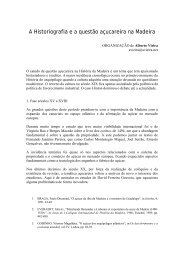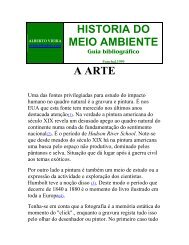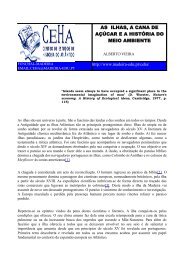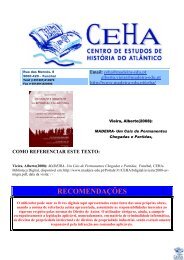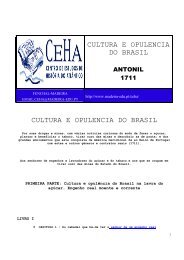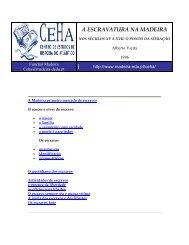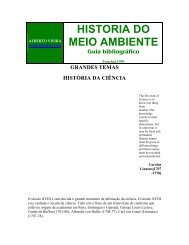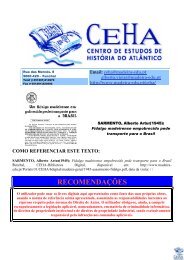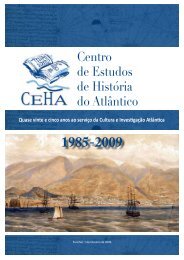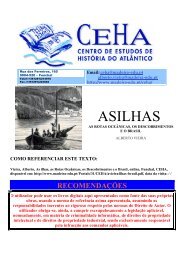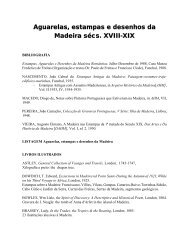SLAVERY IN MADEIRA
SLAVERY IN MADEIRA
SLAVERY IN MADEIRA
Create successful ePaper yourself
Turn your PDF publications into a flip-book with our unique Google optimized e-Paper software.
dissemination in the south and north coasts conditioned the trenching and ownership of<br />
the grounds. The initial and large concessions of ground were divided according to the<br />
progress of the population and the agricultural experiences. The first extensive<br />
exploitation gave place to an intensive gain of the soil based on the many "poios" built by<br />
owners and leaseholders. This way it is difficult, if not impossible to talk of the big<br />
grounds of sugar plantation if we stand on the level of the American world. Only<br />
someone that has not been to the island can say the contrary.<br />
In the American case a sugar cane plantation is nearly always linked to an industrial<br />
complex - engine - for its transformation ,which does not happen in Madeira. Here many<br />
are the owners of the plantations but few of the engines. This different structure of the<br />
sugar industry conditioned the positioning of the slave.<br />
Still in the Madeiran agricultural exploitation it is necessary to distinguish two groups of<br />
proprietors : those who rented the grounds and the ones who exploited them. These two<br />
ways of owning land marked in an evident manner the agricultural activity and favoured<br />
the appearing and the affirmation of the colonial contract, from the end of the XVIcentury.<br />
On the other hand the reduced size of the sugar plantations did not oblige the<br />
existence of an engine for the transformation of the cane nor a large number of slaves.<br />
In the beginning the sugar cane engines were a privilege of the captain donnees and only<br />
much later the private owners come up. This way the position of the slaves in the<br />
Madeiran rural structure must be equated according to the structure and evaluative<br />
process of the property system in the island. If it is certain that in the direct exploitation<br />
or leasehold of the grounds a clear position for the slave is established, the same cannot<br />
be said with a colonial contract.<br />
Just as we said, the orographical conditions of the island limited the affirmation of the<br />
property system of the sugar culture. Here the plantations are different from number of<br />
owners and engines. The possession of this heavy structure only has place with the<br />
island's most important owners in it's majority living from quit-rents and leaseholds.<br />
Confronted the facts of the production and the plantation owners, in the period from 1509<br />
to 1537, to those of the slaves in this century we observe an asymmetry between the main<br />
sugar production areas ("Partes do Fundo = Ribeira Brava, Ponta do Sol and Calheta) and<br />
the number of slaves. Funchal, which showed only 32% of the plantation owners and<br />
26% of the sugar production, is the area with greater owner and slave expression. In an<br />
analysis of the different judicial districts from Funchal's captaincy (Funchal, Ribeira<br />
Brava, Ponta do Sol e Calheta) and of Machico, this asymmetry becomes more evident.<br />
The only possible concordance is in the comparison between both captaincies : in<br />
Funchal, main sugar production area, with more than two thirds of it, also has the greater<br />
number of slaves and families that usufruct from their work.<br />
For the XV-century, slave references are only found in Funchal and Ponta do Sol, when<br />
the greater sugar production, according to 1494 numbers, was situated in the area defined<br />
by "Partes do Fundo". Still in this century, it is possible to establish a parallel between the<br />
four districts in Funchal. The city area and the suburbs are still the main slave area (81%).




